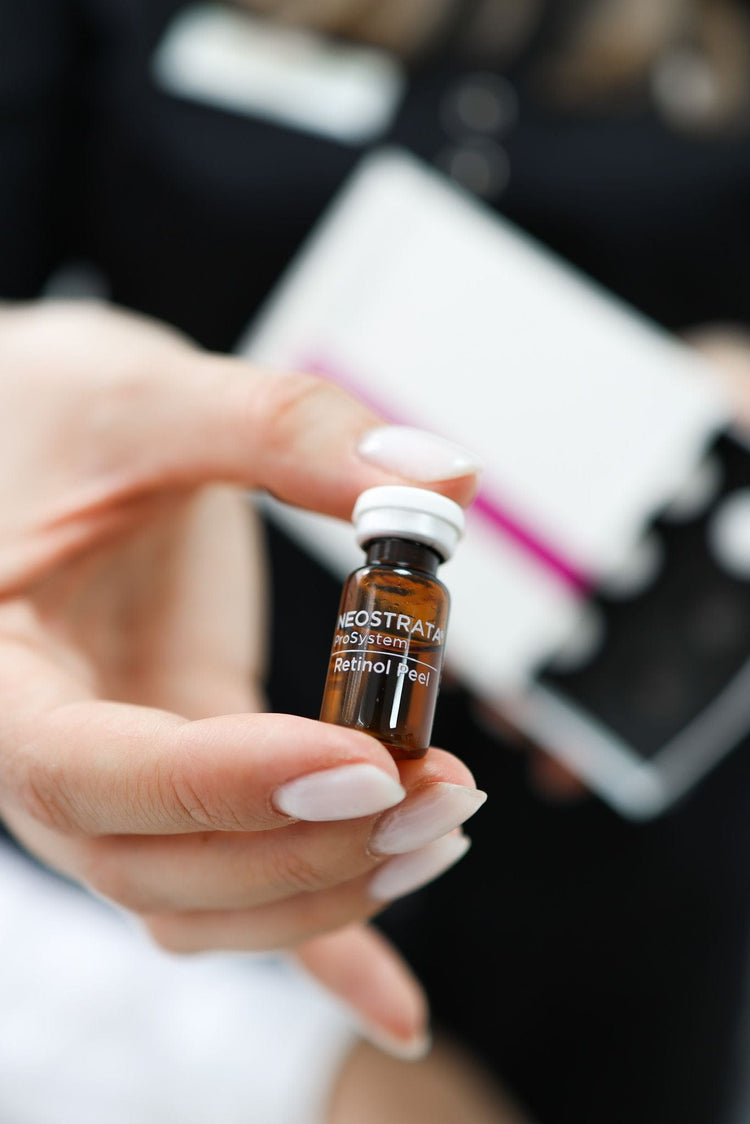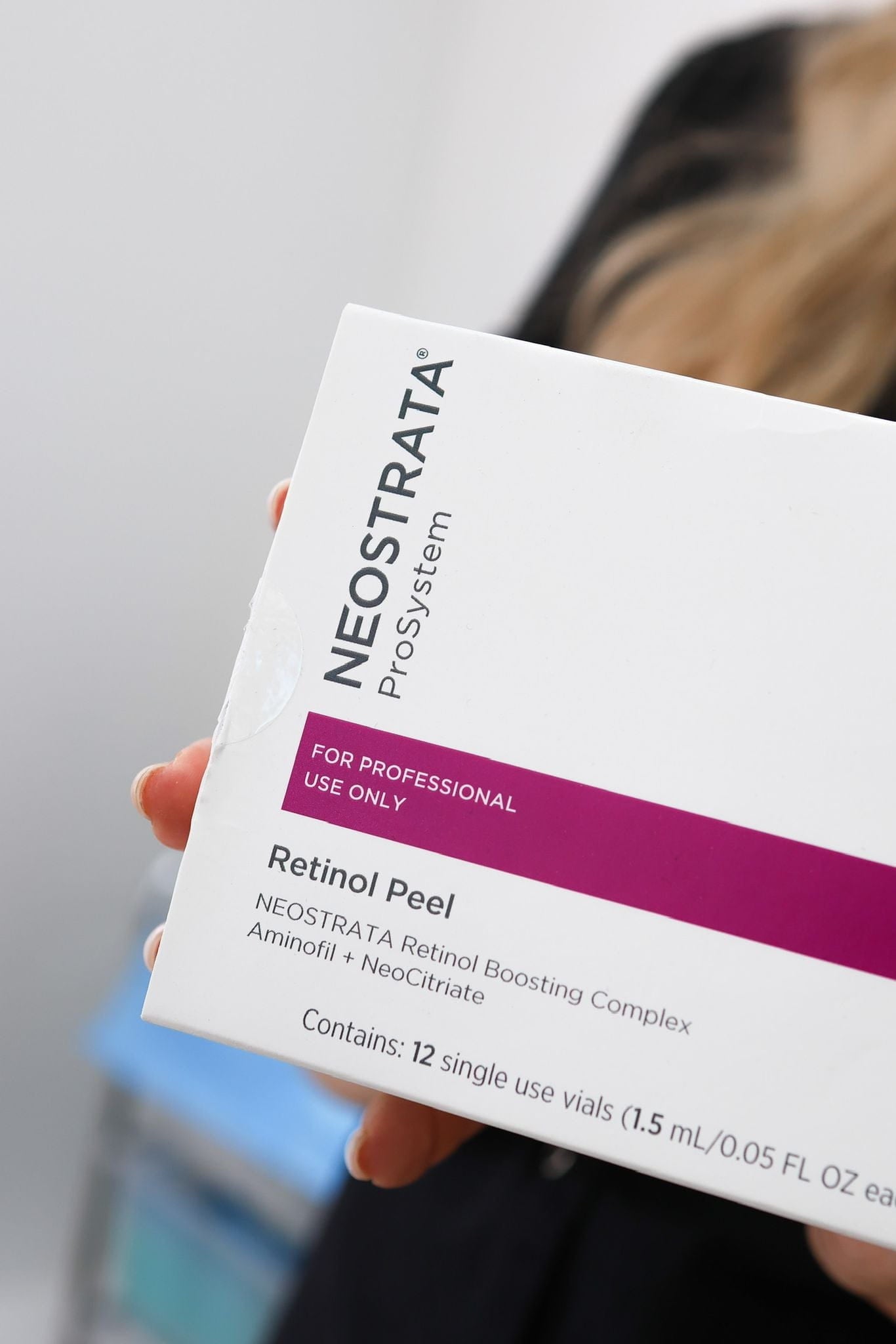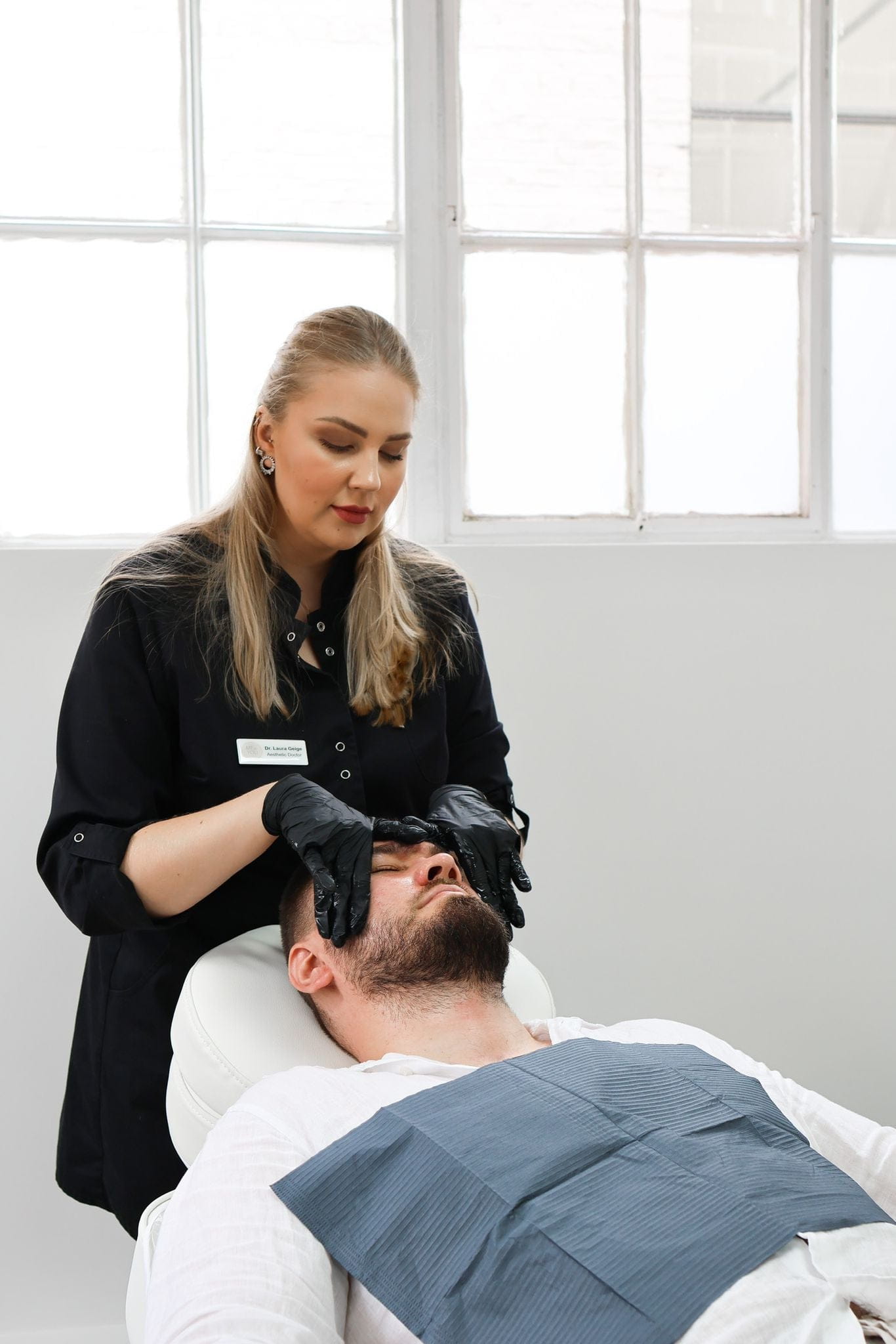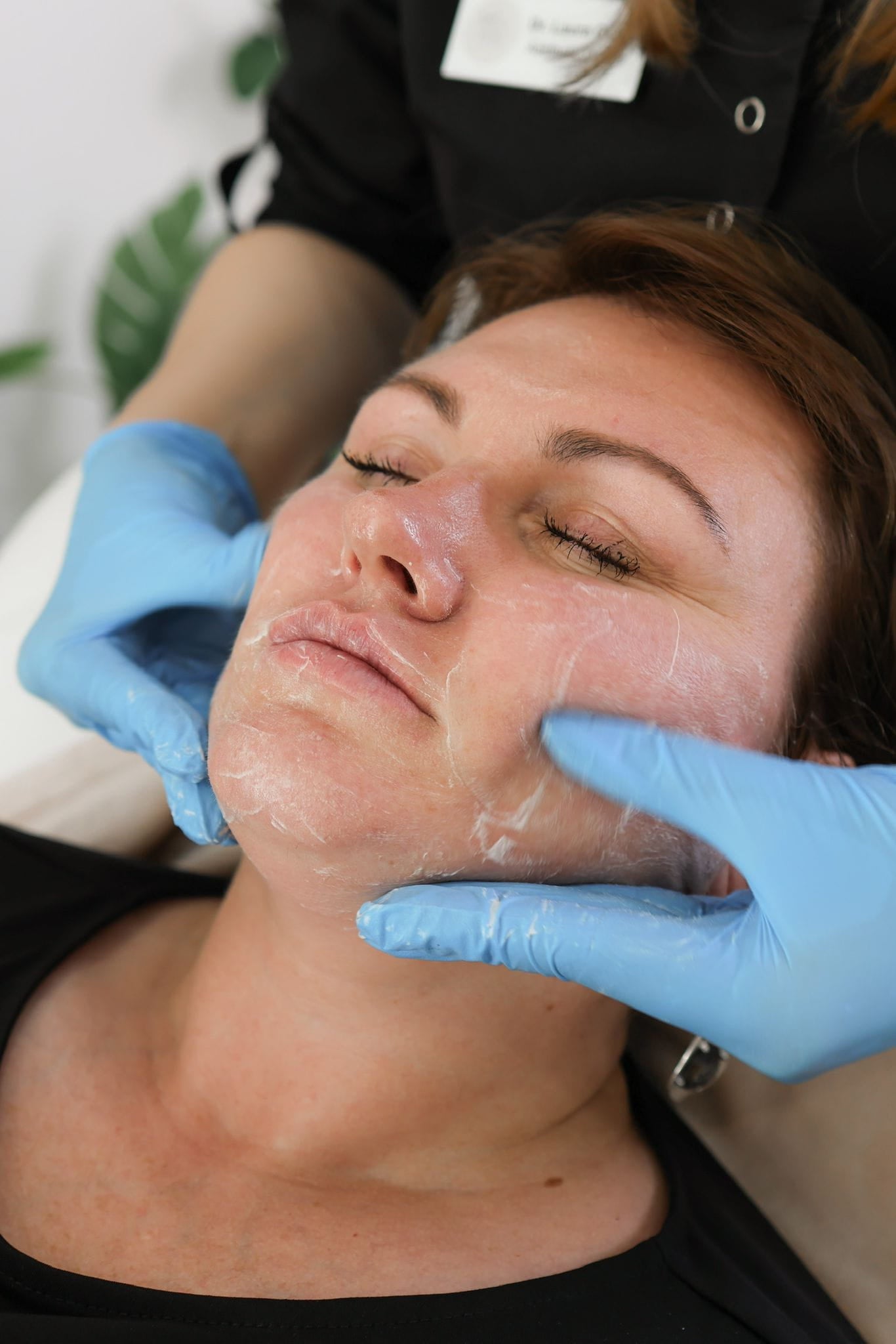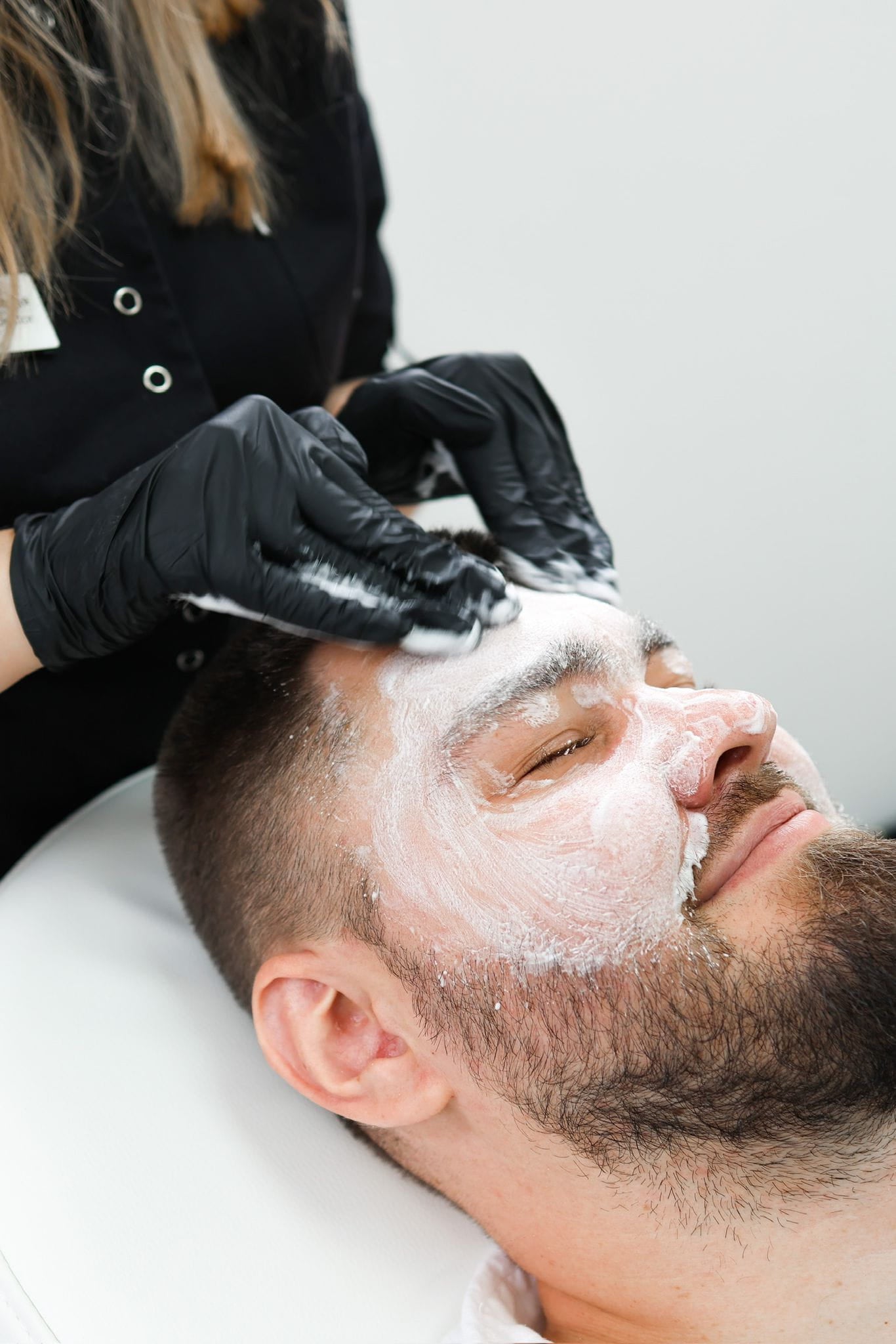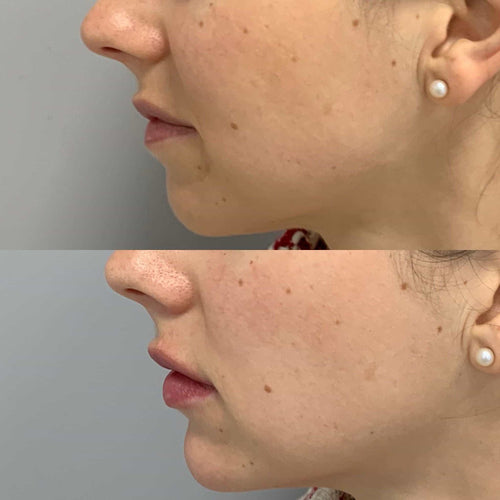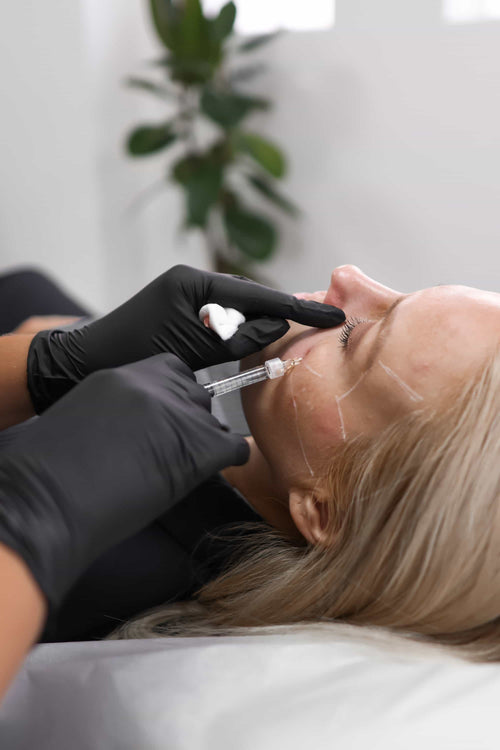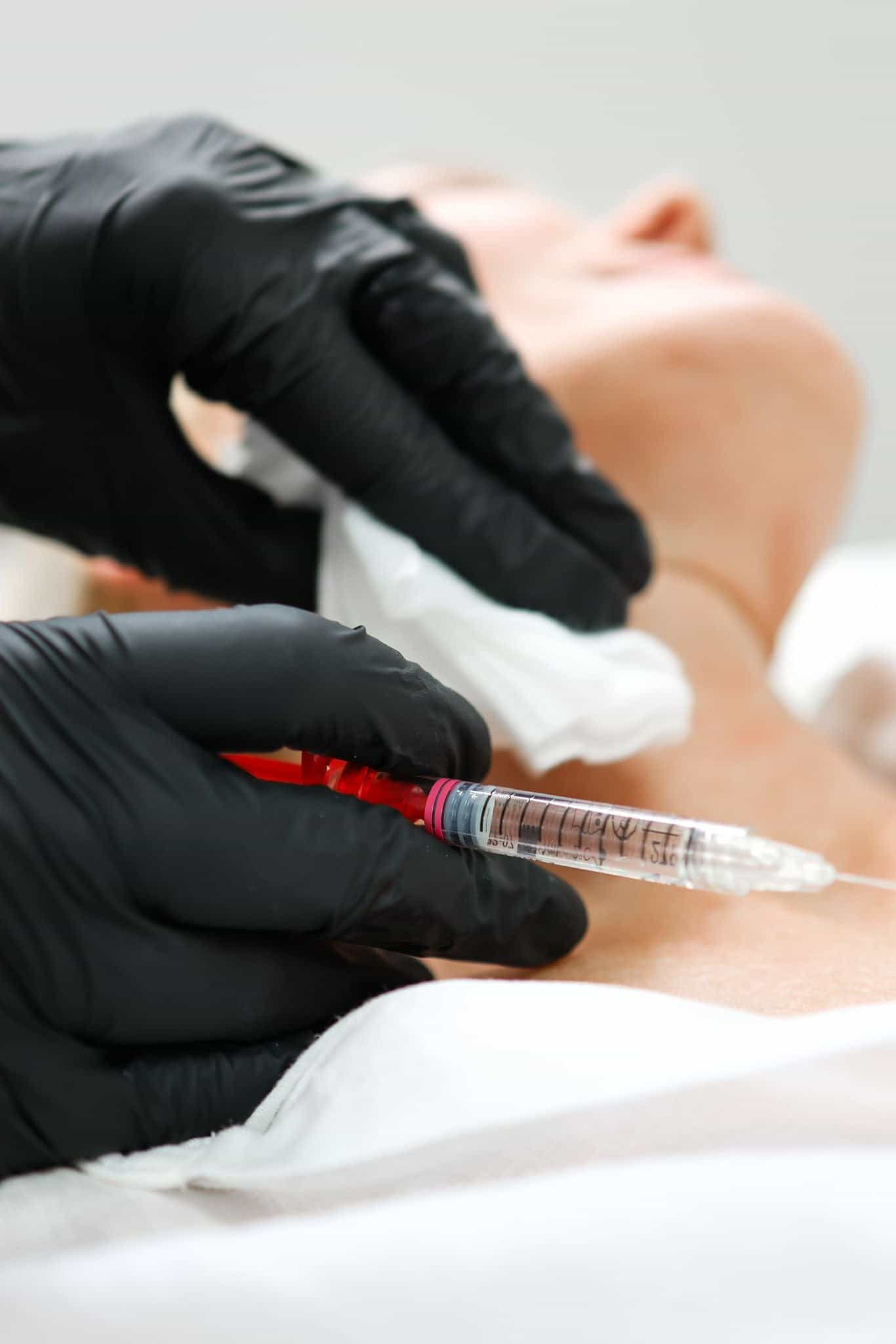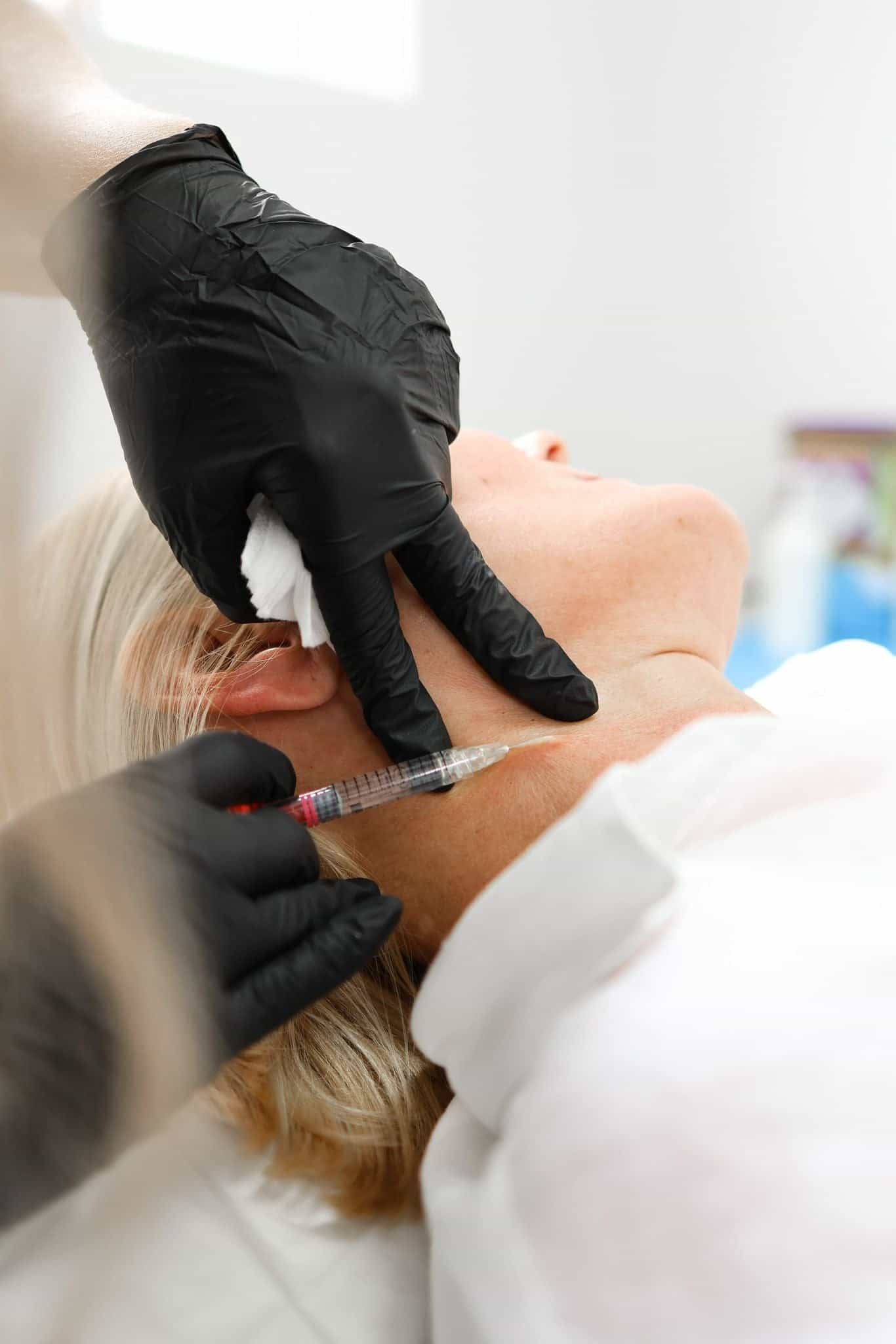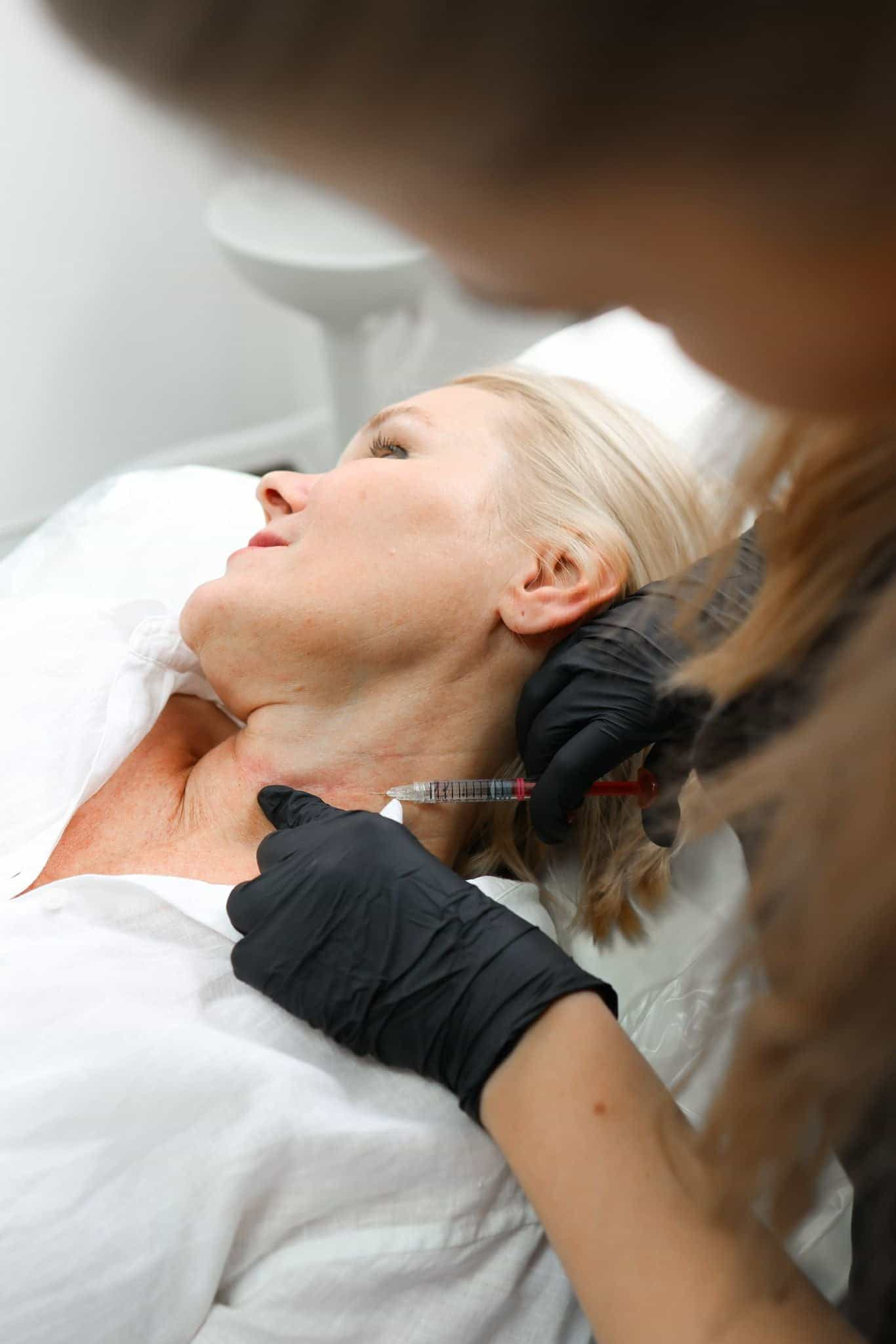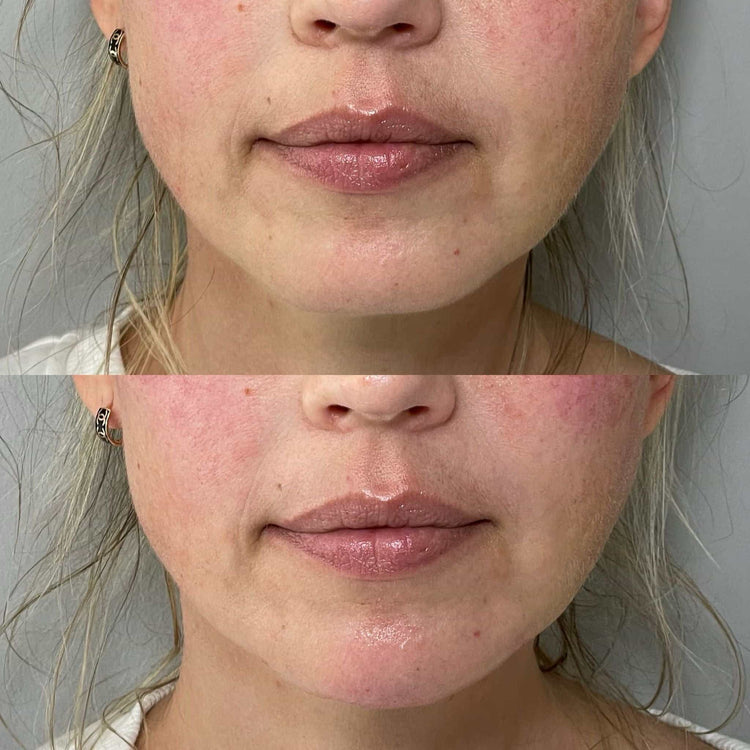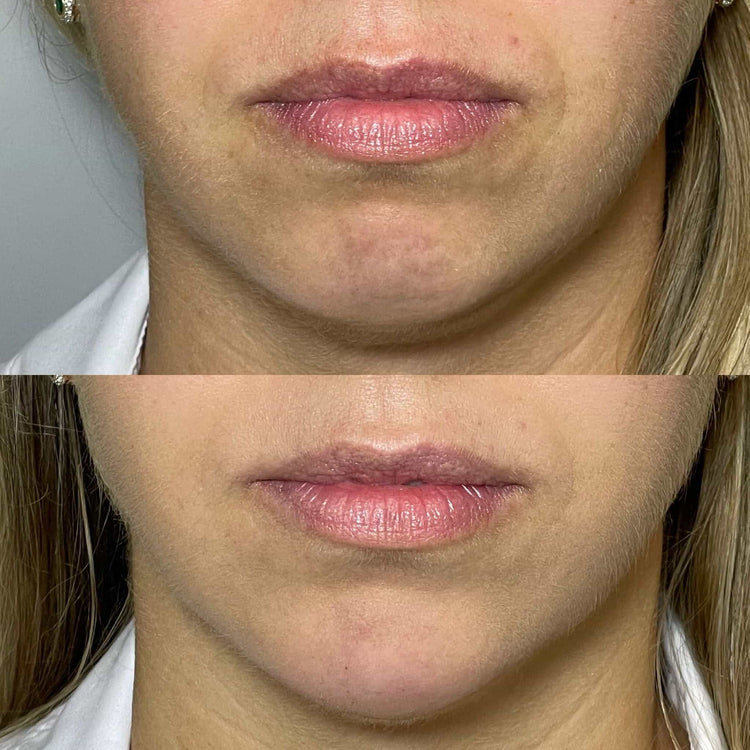Jul 8, 2025
Downturned Smile Treatment Near Sutton, Surrey
Find Comprehensive Dermal Filler Info at It’s Me and You Clinic
Understanding Downturned Smiles
A Brief Overview of the Condition
Downturned smile, also known as downturned mouth or depressor muscle dysfunction, refers to a condition where the corners of the mouth curve downwards, giving the appearance of sadness or unhappiness.
It can be a habitual facial movement, often caused by muscle imbalances in the face and jaw, leading to an uneven distribution of facial tension.
The depressor muscles, which include the depressor anguli oris, depressor labii inferioris, and hyoglossus, are responsible for pulling the corners of the mouth down when they contract. If these muscles become overactive or weak, it can lead to a downturned smile.
Other contributing factors to downturned smiles include:
– Muscular habits formed during childhood or adolescence that persist into adulthood
– Poor posture, leading to uneven facial muscle distribution
– Facial trauma or injury, causing scarring or contracture of the muscles
– Neurological conditions such as dystonia or Parkinson’s disease, which can affect facial movements
– Genetics and individual differences in facial anatomy and muscle structure
People with downturned smiles may experience:
– Social anxiety and self-consciousness about their appearance
– Difficulty making others smile when they see them
– Reduced confidence and overall sense of well-being
Downturned smile treatment typically involves a combination of:
– Facial massage and exercises to relax tense muscles
– Posture correction and body awareness training to redistribute facial tension
– Orthodontic or orthognathic treatment to correct alignment issues that may contribute to the condition
– Myofunctional therapy to re-educate the depressor muscles and promote a more even smile line
In some cases, surgical intervention may be necessary to correct underlying structural issues.
• A downturned smile, also known as a “saggy” or “downturned” smile, occurs when the corners of the mouth droop downwards.
A downturned smile can significantly impact a person’s self-confidence and overall quality of life.
This type of smile defect occurs when the muscles responsible for smiling are weakened or paralyzed, causing the corners of the mouth to droop downwards.
There are several reasons that can contribute to a downturned smile, including:
-
Neurological conditions such as Bell’s palsy, which causes paralysis of the facial muscles
-
Dental issues like tooth loss or gum disease, which can cause uneven bite and affect smiling patterns
-
Muscle imbalances or asymmetry, which can lead to uneven contraction of the facial muscles during smiles
-
Aging, as the facial muscles naturally lose strength and tone with age
-
Genetic predisposition, where some people may be more prone to muscle weakness or imbalances due to their genetic makeup
A downturned smile can also have a significant impact on one’s appearance, making them appear:
sad, unhappy, or unapproachable
Additionally, a downturned smile can be a symptom of an underlying condition that requires medical attention.
In such cases, treating the underlying cause is essential to achieve lasting results and improve overall facial aesthetics.
Fortunately, there are effective treatment options available to address a downturned smile:
-
Dental treatments like dental implants or dentures can help restore the appearance of teeth and improve smiling patterns
-
Facial exercises, such as those used in facial yoga or myofacial release therapy, can help strengthen weakened muscles and improve muscle balance
-
Surgery, such as a facelift or smile lift procedure, can be used to reposition the facial bones and restore a more natural smile alignment
However, the most effective treatment for a downturned smile often lies in addressing the underlying cause.
A comprehensive assessment by a qualified dentist or a medical professional is essential to determine the best course of treatment.
In the case of Sutton, Surrey, there are several dentists and healthcare professionals who specialize in treating downturned smiles and offer personalized treatment plans to address each patient’s unique needs.
• It can be caused by muscle weakness in the masseter and temporalis muscles, which control facial expressions.
Downturned smiles can be a subtle yet noticeable sign of underlying issues affecting facial muscle strength and coordination.
It’s estimated that 60-70% of adults experience some form of facial weakness or paralysis at some point in their lives, which can lead to downturned smiles and other facial asymmetries.
The primary cause of downturned smiles lies in the masseter and temporalis muscles, responsible for controlling facial expressions such as smiling, frowning, and chewing. These muscles are vital for maintaining a healthy and aesthetically pleasing facial profile.
When one or both of these muscles become weak or overactive, it can lead to an uneven distribution of facial tension, resulting in a downturned smile. This can be due to a variety of factors, including:
- Achieving significant weight loss, which can stretch and weaken the masseter muscle.
- Having a genetic predisposition to facial weakness or paralysis.
- Experiencing stress, anxiety, or tension, which can lead to muscle tightness and imbalance.
- Suffering from conditions such as **Bell’s palsy**, which affects the nerve controlling facial muscles.
- Misalignments of the teeth, gums, or jaw joint, which can alter the way facial muscles function.
A treatment for downturned smiles typically involves a combination of exercises, lifestyle modifications, and in some cases, **Botox injections**. These treatments aim to restore balance and strength to the affected facial muscles, allowing for a more symmetrical and aesthetically pleasing smile.
One common exercise used to treat downtuned smiles is the **smile with chin tucks**, which targets the masseter muscle. This involves placing the index fingers on the top of the teeth and gently pulling the chin down while smiling. Repeated practice can help strengthen this muscle and improve overall facial alignment.
In some cases, a facial massage may be recommended to relax tense muscles and promote blood flow to the affected area. This can help reduce stress and anxiety, which are common contributors to downturned smiles.
A comprehensive treatment plan for downtuned smiles should be developed in consultation with a qualified healthcare professional or dermatologist. This may involve a combination of:
- Facial exercises and stretches
- Lifestyle modifications, such as stress management techniques and a balanced diet
- Botox injections to relax overactive muscles
- Muscle stimulation therapy
- Dental realignment or orthodontic treatment
A successful treatment for downtuned smiles requires patience, consistency, and dedication. By understanding the causes of this condition and working with a qualified professional, it is possible to achieve a more balanced, symmetrical, and aesthetically pleasing smile.
• Research from the University of California, Los Angeles (UCLA) has identified the importance of these muscles in maintaining a natural smile.

The downturned smile is a facial expression that can convey negative emotions such as sadness, disappointment, and frustration.
It is characterized by a slight lowering of the corners of the mouth, often accompanied by a furrowed brow and a squinting eye.
This expression is not only aesthetically unappealing but also has a significant impact on one’s overall appearance and self-confidence.
Contact Dr. Laura Geige at It’s Me and You Clinic Today for Help
Research from the University of California, Los Angeles (UCLA) has identified the importance of the muscles involved in maintaining a natural smile, including those responsible for creating a downturned smile.
The *_zygomaticus major_* muscle is a key player in this process, as it helps to control the movement of the corners of the mouth. When this muscle is weakened or imbalanced, it can lead to a downtuned smile.
Additionally, the *_depressor anguli oris_* muscle also plays a crucial role in creating a downturned smile. This muscle helps to lower the corners of the mouth and is often affected by factors such as stress, anxiety, and fatigue.
The interplay between these muscles is complex, and when they become imbalanced, it can result in a range of facial expressions, including the downtuned smile.
Understanding the role of these muscles in creating a downturned smile is essential for those seeking to improve their facial aesthetics. This knowledge can be applied to a range of treatments, including *_orthodontics_*, *_facial rehabilitation_*, and *_smile design_*.
Downturned smiles can often be treated with *_Botox_* or *_fillers_*, which can help to relax the *_zygomaticus major_* muscle and restore a more natural smile. In some cases, *_orthodontic treatment_* may also be necessary to address underlying issues such as crooked teeth or gaps between the teeth.
Furthermore, *_facial exercises_* and *_relaxation techniques_* can help to strengthen the muscles involved in creating a downturned smile, promoting a more balanced and natural facial expression.
In addition to these treatments, maintaining good oral hygiene, eating a healthy diet, and getting regular exercise can also help to promote a healthy, natural-looking smile.
A professional *_dentist_* or *_facial specialist_* can provide personalized advice and guidance on the best course of treatment for addressing a downtuned smile.
Treatment Options for Downturned Smiles
Non-Surgical Treatments
Treatment options for a *downturned smile*, also known as a smile asymmetry, are available to help restore confidence and improve overall facial appearance.
A non-surgical treatment approach often involves a combination of cosmetic dental procedures and orthodontic treatments. The primary goal is to address the underlying cause of the downturned smile, whether it be due to teeth misalignment, gum recession, or muscle imbalances.
One popular non-surgical treatment option is Botox injections. Botox can help relax the *facial muscles* responsible for a downturned smile by releasing tension in the temporalis and masseter muscles. This procedure is often used in conjunction with dental treatments to achieve optimal results.
Aesthetic dentistry plays a significant role in treating downturned smiles through various cosmetic procedures. These include teeth whitening, *veneers*, and crowns*. Teeth whitening can help brighten the smile, while veneers and crowns can correct misalignment, discoloration, or chips that contribute to a downturning effect.
A smile lift, also known as a *maxillomandibular repositioning device (MMRD)*, is a non-surgical treatment that involves the use of a customized orthodontic appliance. This device helps to elevate the upper jaw and correct tooth alignment without the need for traditional braces.
Facial exercises, such as masseter* relaxation techniques, can also help strengthen the facial muscles responsible for smiling, thus reducing the appearance of a downturned smile.
A comprehensive treatment plan for a downtuned smile will depend on individual circumstances and may involve a combination of these options. Regular check-ups with a dentist or orthodontist are essential to monitor progress and adjust treatment as needed.
It’s recommended to seek professional advice from a qualified dentist, orthodontist or cosmetic dentist near Sutton, Surrey for a personalized treatment plan tailored to address your specific concerns and goals.
A downturned smile can significantly impact self-esteem and overall quality of life. By exploring these non-surgical treatment options, it’s possible to restore a more confident and radiant smile, without the need for invasive procedures.
• Botox injections are a popular nonsurgical treatment to temporarily relax the facial muscles responsible for a downturned smile.
Botox injections are a popular nonsurgical treatment to temporarily relax the facial muscles responsible for a downturned smile.
This minimally invasive procedure involves injecting Botox into specific areas of the face, such as the corners of the mouth or the zygomaticus major muscle, which runs from the cheekbone to the mouth corner.
The Botox injections work by blocking the release of a neurotransmitter called acetylcholine, which signals the muscles to contract. By relaxing these muscles, the appearance of a downturned smile is reduced.
For optimal results, Botox injections are typically administered in conjunction with other treatments, such as dermal fillers, to restore the natural contours and shape of the face.
In addition to treating a downturned smile, Botox can also be used to treat other facial concerns, including:
frown lines and crow’s feet, which are wrinkles that form between the eyebrows and at the outer corners of the eyes.
The effects of Botox injections typically last for 3-4 months, after which time the muscles will begin to contract again and the smile will appear downturned once more.
To maintain optimal results, regular Botox treatments may be necessary. However, this can be customized to an individual’s needs and budget.
Another nonsurgical treatment option for a downtuned smile is dermal fillers, which involve injecting hyaluronic acid or other materials into the facial tissues to restore lost volume and contours.
Dermal fillers, such as Juvederm or Restylane, can be used to treat a range of concerns, including:
nasolabial folds, which are wrinkles that run from the nose to the mouth corner.
Marionette lines, which are wrinkles that form around the mouth and chin area.
Some people may also consider chemical peels, which involve applying a solution to the skin to remove the top layers and promote cell turnover.
Chemical peels can help to improve the overall appearance of the face, including the smile, by:
Removing dead skin cells and promoting new collagen production.
Improving skin texture and tone, leaving the skin looking smoother and more radiant.
While chemical peels can be effective in treating a range of concerns, they may not be suitable for everyone. A consultation with a qualified healthcare professional is necessary to determine if this treatment is right for you.
An alternative treatment option is facelift surgery, which involves surgically repositioning and tightening the facial tissues to restore lost volume and contours.
Facelift surgery can be customized to an individual’s needs and budget, and may involve:
Rejuvenating the midface to restore lost volume and definition.
Tightening the lower face to reduce sagging and improve the overall appearance of the smile.
However, facelift surgery carries risks and complications, including:
Scarring, infection, and nerve damage.
It’s essential to consult with a qualified healthcare professional to discuss your individual needs and determine the best course of treatment for a downtuned smile in Sutton, Surrey.
• According to the American Academy of Facial Plastic and Reconstructive Surgery (AAFPRS), Botox can be effective in reducing muscle activity by up to 75%.
Downturned smiles can greatly affect an individual’s overall self-confidence and appearance.
A downturned smile is often caused by a combination of factors, including facial structure, muscle imbalances, and aesthetic concerns.
Fortunately, there are various treatment options available to address this issue and restore a more youthful, radiant smile.
One popular treatment for downtuned smiles is Botox injections. According to the American Academy of Facial Plastic and Reconstructive Surgery (AAFPRS), Botox can be effective in reducing muscle activity by up to 75%.
Botox works by temporarily relaxing the facial muscles that contribute to a downturned smile.
For individuals with severe cases of bruxism or TMJ disorder, Botox may be combined with other treatments such as night guards or physical therapy to address underlying issues.
In addition to Botox, there are several surgical and non-surgical alternatives available for treating downtuned smiles.
Surgical options include facelifts, brow lifts, and cheek augmentation, which can help restore a more balanced facial structure and improve smile dynamics.
A less invasive alternative is kybella injections, which target and dissolve excess fat beneath the chin to create a more defined jawline and improved smile line.
Another option is dermal fillers such as hyaluronic acid or calcium hydroxylapatite, which can be used to augment cheekbones, nasolabial folds, or other facial areas contributing to a downturned smile.
Nonsurgical treatments like chemical peels, microdermabrasion, and laser resurfacing can also help improve the appearance of fine lines, wrinkles, and skin discoloration associated with a downtuned smile.
A comprehensive consultation with an experienced facial plastic surgeon or dermatologist is essential to determine the most effective treatment plan for each individual’s unique needs and concerns.
By combining one or more of these treatments, individuals can achieve a more balanced, radiant, and youthful appearance that showcases their natural smile.
In the context of treatment near Sutton, Surrey, patients have access to a range of skilled professionals with extensive experience in facial plastic surgery and non-surgical aesthetics.
From Botox injections to surgical facelifts, individuals seeking treatment for downtuned smiles can trust that they are in good hands with experienced and highly trained specialists.
With the right treatment approach and care, individuals can regain their confidence and enjoy a more radiant, uplifting smile that enhances their overall appearance and well-being.
• Facial exercises, such as those recommended by the National Institute on Aging, may also help strengthen the surrounding facial muscles.
Downturned Smiles can be a common issue affecting many people, leading to feelings of self-consciousness and insecurity about one’s appearance.
Fortunately, there are several effective treatment options available for correcting a downturned smile, and in some cases, non-surgical treatments can be sufficient.
Facial exercises, such as those recommended by the National Institute on Aging, may also help strengthen the surrounding facial muscles. These exercises can include:
-
Tongue lifts: This involves sticking your tongue out and then pulling it back into your mouth, repeating this motion several times a day.
-
Lip curls: Curling your lips up towards your nose can help strengthen the muscles that control facial expression.
-
Cheek lifts: Squeezing your cheeks upwards and then releasing can help improve the overall shape of your face.
In addition to facial exercises, other non-surgical treatments for downtuned smiles may include:
-
Orthodontic treatment: Straightening your teeth through orthodontics can help correct a downturned smile by improving the alignment and positioning of your teeth.
-
Anti-wrinkle injections: Injections containing botulinum toxin can be used to relax facial muscles that contribute to a downturned smile.
-
Facial fillers: Injecting dermal fillers, such as hyaluronic acid or calcium hydroxylapatite, into the affected areas of your face can help restore lost volume and improve the shape of your smile.
In more severe cases, surgical treatment may be necessary to correct a downturned smile. Surgical options include:
-
Facelift: A facelift involves surgically repositioning and tightening the skin and underlying tissues on your face, which can help restore lost volume and improve the overall shape of your features.
-
Buccal fat removal: Removing excess buccal fat from under the cheekbones can help slim down the appearance of your cheeks and create a more defined smile.
No matter which treatment option you choose, it’s essential to find a qualified and experienced healthcare professional who specializes in facial rejuvenation treatments. By working with an expert, you can achieve the best possible results for your downtuned smile.
Long-Term Solutions for Downturned Smiles
Surgical Options and Preventative Measures
Downturned smiles can have a significant impact on a person’s self-confidence and overall quality of life, but fortunately, there are several long-term solutions available to help restore a natural smile.
Surgical options are often the most effective way to correct a downturned smile, particularly when it is caused by a severe overbite or underbite. One common surgical procedure used to treat this condition is orthognathic surgery, which involves surgically reshaping the upper and lower jaws to improve their alignment and position.
Orthognathic surgery can be performed using various techniques, including open reduction and internal fixation (ORIF) and rapid maxillary expansion (RME). ORIF involves making incisions in the gums to access the bones of the jaw, while RME uses a specialized device to widen the upper jawbone.
Another surgical option for correcting a downturned smile is facial rejuvenation surgery, which focuses on improving the overall appearance of the face rather than just the teeth. This can include procedures such as facelifts, eyelid lifts, and lip augmentation.
Preventative measures are also an essential part of maintaining a healthy and attractive smile. One key step is regular dental check-ups and cleanings to prevent oral health problems like tooth decay and gum disease.
A balanced diet rich in fruits, vegetables, and whole grains can also help to support good oral health. Additionally, avoiding sugary drinks and snacks, as well as limiting consumption of acidic foods and beverages, can help to reduce the risk of tooth erosion and other oral health issues.
Another preventative measure is to wear a mouthguard or night guard if you grind your teeth at night. This can help to protect your teeth from damage and wear, which can contribute to a downturned smile over time.
In some cases, a combination of surgical options and preventative measures may be necessary to achieve the best results for a downturned smile. For example, someone who has a severe overbite may require orthognathic surgery, as well as regular dental cleanings and check-ups, to maintain good oral health.
Asking questions and seeking guidance from a qualified dentist or orthodontist can also help you determine the best course of treatment for your downturned smile. By taking a comprehensive approach that combines surgical options with preventative measures, you can achieve a long-term solution that restores a natural smile and improves your overall quality of life.
Working with an experienced and reputable dentist near Sutton, Surrey is essential to ensure that you receive the best possible care for your downtuned smile. Look for a practitioner who has extensive experience in treating similar conditions, as well as a proven track record of success and satisfied patients.
A consultation with a qualified dentist or orthodontist can help you determine the underlying cause of your downturned smile and develop a personalized treatment plan that addresses your unique needs and concerns. By investing in a high-quality smile restoration treatment near Sutton, Surrey, you can enjoy a long-term solution that enhances your self-confidence and overall well-being.
• Smile lift surgery, also known as a zygomaticus major elevation procedure, can be performed to raise the corners of the mouth.
Smile lift surgery, also known as a zygomaticus major elevation procedure, is a surgical treatment option for individuals who want to correct their downturned smile and restore a more vibrant appearance to their face.
The zygomaticus major muscle plays a crucial role in smiling, and when this muscle becomes weakened or atrophied, it can lead to a downtrended smile. This condition can be caused by various factors such as aging, facial paralysis, or trauma to the face.
The procedure involves making an incision in the area where the zygomaticus major muscle is attached and then elevating the muscle to restore its natural position. The surgeon will use sutures to secure the muscle in place, allowing it to heal and regain its strength over time.
There are several benefits to smile lift surgery, including:
• Improved smile line: The procedure can help restore a more defined smile line, reducing the appearance of a downturned mouth.
• Enhanced facial symmetry: By elevating the zygomaticus major muscle, the surgeon can also improve the overall balance and harmony of the face.
• Increased self-confidence: A corrected smile can greatly impact an individual’s self-esteem and confidence, leading to a more positive outlook on life.
• Durability: Smile lift surgery is a long-term solution that can last for many years with proper care and maintenance.
It’s essential to note that smile lift surgery may not be suitable for everyone. Potential candidates should have realistic expectations about the procedure’s outcome, and it’s crucial to consult with a board-certified plastic surgeon who has extensive experience in facial rejuvenation procedures.
The surgical process typically takes around 1-2 hours to complete, depending on the complexity of the case. After the surgery, patients can expect some swelling, bruising, and discomfort, which should resolve within a few days to a week.
To ensure optimal results and minimize complications, patients are advised to follow a comprehensive post-operative care routine, including:
• Rest and relaxation: Avoid strenuous activities for a few weeks after the surgery.
• Pain management: Take prescribed pain medication as directed by your surgeon.
• Swelling management: Apply ice packs to reduce swelling and bruising.
• Surgery follow-up appointments: Attend all scheduled follow-up appointments with your surgeon.
A smile lift surgery can be performed under local anesthesia, sedation, or general anesthesia, depending on the individual’s comfort level and anxiety levels.
The cost of smile lift surgery varies depending on several factors, including the surgeon’s fees, location, and complexity of the case. On average, the procedure can range from £4,000 to £6,000 in the UK, although this may be higher or lower depending on your specific needs.
While smile lift surgery is a highly effective treatment for downturned smiles, it’s essential to maintain realistic expectations about its outcome. Results can vary depending on individual factors such as facial structure, muscle strength, and skin elasticity.
In some cases, additional treatments or procedures may be necessary to achieve the desired results. These could include facelift surgery, blepharoplasty (eyelid surgery), or other facial rejuvenation treatments.
• The Royal College of Surgeons of England (RCS) recommends this treatment for individuals with severe cases of downturned smiles.
The treatment for downtuned smile can be achieved through various surgical and non-surgical methods, offering long-term solutions to restore confidence and improve overall facial aesthetics.
A severe case of a downturned smile, where the lower jawbone (mandible) is underdeveloped or too small in proportion to the upper jaw, requires careful evaluation by an experienced dentist, orthodontist, or oral surgeon.
The Royal College of Surgeons of England (RCS) recommends treatment for individuals with such cases, emphasizing the importance of addressing this issue to improve not only the appearance but also overall quality of life.
A common approach involves a combination of orthognathic surgery and orthodontics. Orthognathic surgery is usually performed first, where surgical correction of the jaw alignment provides the necessary foundation for further treatment.
The surgery aims to realign or reshape the mandible, enhancing the balance between the upper and lower jaws and promoting proper tooth positioning. This step often precedes or accompanies orthodontic treatment, which ensures that the newly positioned teeth fit harmoniously into their corrected jaw structure.
During the post-operative phase, patients typically experience swelling, discomfort, or bruising at the surgical sites. Soft food diets, pain management medication, and follow-up appointments with the surgeon are crucial for a smooth recovery process.
Once the jaw bones have stabilized, orthodontic treatment begins. Braces or aligners gently move the teeth into their new positions, completing the alignment correction started by surgery. This phase usually takes several months to two years, depending on the complexity of the case and individual treatment needs.
An additional long-term solution is necessary to maintain the corrected bite and facial balance. Following completion of orthodontic treatment, patients often undergo a follow-up oral surgery procedure to further fine-tune their jaw alignment or make minor adjustments as needed.
Post-surgical care involves regular check-ups with the dentist, surgeon, or orthodontist for monitoring healing progress, addressing any issues, and discussing lifestyle modifications for optimal results. Patients are also advised on maintaining good oral hygiene habits and avoiding certain foods that could lead to wear and tear on their corrected teeth.
With proper treatment and adherence to post-surgical instructions, individuals can enjoy a long-lasting, naturally enhanced smile that boosts confidence and improves overall facial appearance.
• Maintaining good oral health and practicing stressreducing techniques may also help prevent muscle strain and promote a more natural smile.
To address a downturned smile, it’s essential to consider long-term solutions that not only correct the aesthetic issue but also promote overall well-being and oral health.
Maintaining good oral health is crucial in preventing muscle strain and promoting a more natural smile. Regular dental check-ups and cleanings can help identify any underlying issues, such as misaligned teeth or temporomandibular joint (TMJ) disorders, which can contribute to a downturned appearance.
Practicing stress-reducing techniques can also play a significant role in addressing a downturned smile. Stress can lead to muscle tension, including those in the facial and jaw muscles, which can cause the lips to curve downward. Techniques such as meditation, yoga, and deep breathing exercises can help alleviate stress and promote relaxation.
Another key aspect of long-term solutions is correcting underlying structural issues that may be contributing to a downturned smile. This may involve orthodontic treatment to realign teeth, or TMJ treatment to address any disorders affecting the jaw joint.
A smile makeover can also be an effective way to address a downturned smile. A smile makeover typically involves a combination of cosmetic dental procedures, such as veneers, bonding, and gum reshaping, to create a more balanced and harmonious appearance.
Additionally, practicing good oral hygiene habits, such as brushing and flossing regularly, can help maintain healthy teeth and gums, reducing the risk of muscle strain and promoting a more natural smile.
In some cases, physical therapy may be recommended to address any underlying issues affecting the jaw muscles or TMJ. This can involve exercises to strengthen the muscles around the jaw and improve range of motion.
It’s also worth considering the role of facial aesthetics in addressing a downturned smile. A skilled dentist or orthodontist can help create a more balanced face shape by adjusting the alignment of teeth, the position of the lips, and the overall contours of the face.
Maintaining good oral health through regular dental cleanings and check-ups is essential in preventing muscle strain and promoting a more natural smile. Additionally, practicing stress-reducing techniques and addressing underlying structural issues can help create a more balanced and harmonious appearance.
Clover Design Online Bronzed Body Spray Tan Making Memories London Fashionably Balanced Otherwheres Magazine



